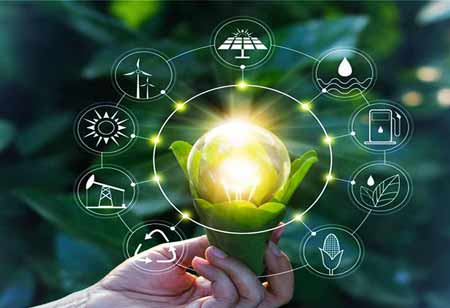Thank you for Subscribing to Energy Business Review Weekly Brief
Three Finest Green Innovations to Watch in 2023
Despite all of its difficulties, last year saw a proliferation of numerous innovations that may be used to advance the development of a sustainable future.

By
Energy Business Review | Monday, February 20, 2023
Stay ahead of the industry with exclusive feature stories on the top companies, expert insights and the latest news delivered straight to your inbox. Subscribe today.
With the global push towards decarbonisation and developments in existing technologies, the hydrogen economy is poised to accelerate at scale.
FREMONT, CA: Despite all of its difficulties, last year saw a proliferation of numerous innovations that may be used to advance the development of a sustainable future. In this section, 2023 can see multiple trends and key focus areas where technologies can transform.
Low-carbon Industrial Materials
According to recent research, buildings are responsible for 39 per cent of all energy-related carbon emissions worldwide. The majority of these emissions are operational, but a third of the total originate from materials and construction, which are equally substantial. By 2060, raw resources used for construction will double on a business-as-usual orbit. Steel, concrete, and cement are already major contributors to global emissions, so meeting climate targets will be difficult, necessitating the development of innovative low-carbon materials.
Hydrogen Trains
Last year, hydrogen was undoubtedly a big topic among sustainability professionals. With nations committing to bringing low-carbon hydrogen to cost parity with fossil hydrogen through the Breakthrough Agenda, the path for scaling production is set. The debate now revolves around the best applications for this hydrogen. In industries that are difficult to electrify, such as steelmaking, shipping, and long-distance transportation for large vehicles, hydrogen should be prioritised.
Rail is one application for hydrogen that is developing quickly. Previously, in August, the world's first hydrogen passenger train began operating in Hamburg, Germany. Then, in December, a brand-new high-speed urban hydrogen train was completed in Xinjin, China. The train can go 600 kilometres on a single charge and is propelled by a combination of hydrogen fuel cells and supercapacitors. Its top speed is 160 kmph, and it is modelled after current "Fuxing" high-speed trains. Within 18 months, the first passenger trips should be accomplished.
Urban Renewable Energy Generation
Since urbanisation and the energy transition are two megatrends developing simultaneously, inventors are considering how renewable energy generation arrays might be installed in densely populated places. For instance, Aeromine Technologies has developed bladeless turbines that may be put atop sizable structures with flat roofs. The turbines are made to be silent when operating and may be linked directly to a building's electrical supply. On the roof of a structure, Aeromine mounts typically 20 to 40 turbines on the side that experiences the most reliable wind. Solar film from Filia Solar and Power Roll, which can be mounted to exterior roller blinds to provide solar arrays for any home, is another example of innovation in urban renewable energy. Technologies that utilise hydrogen to synthesise intermediaries further increase hydrogen’s utility as an energy carrier.






